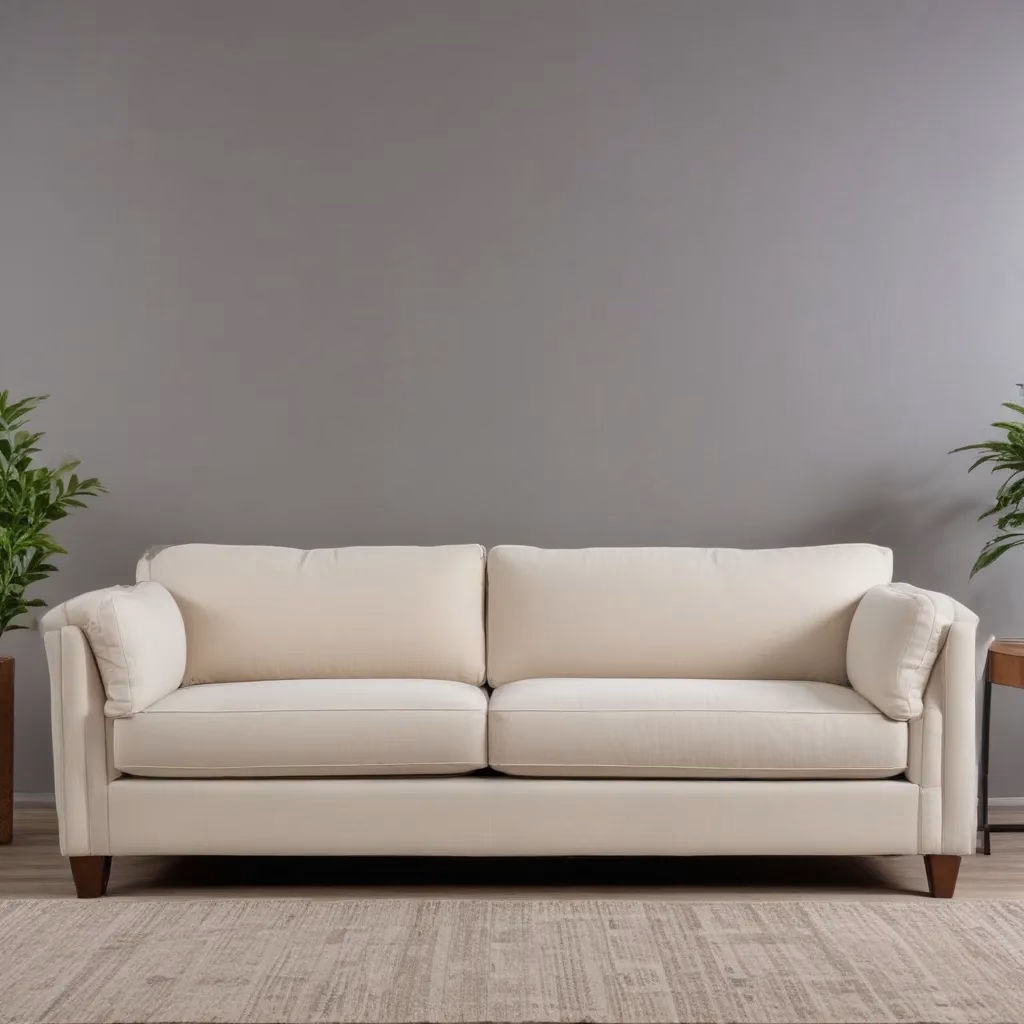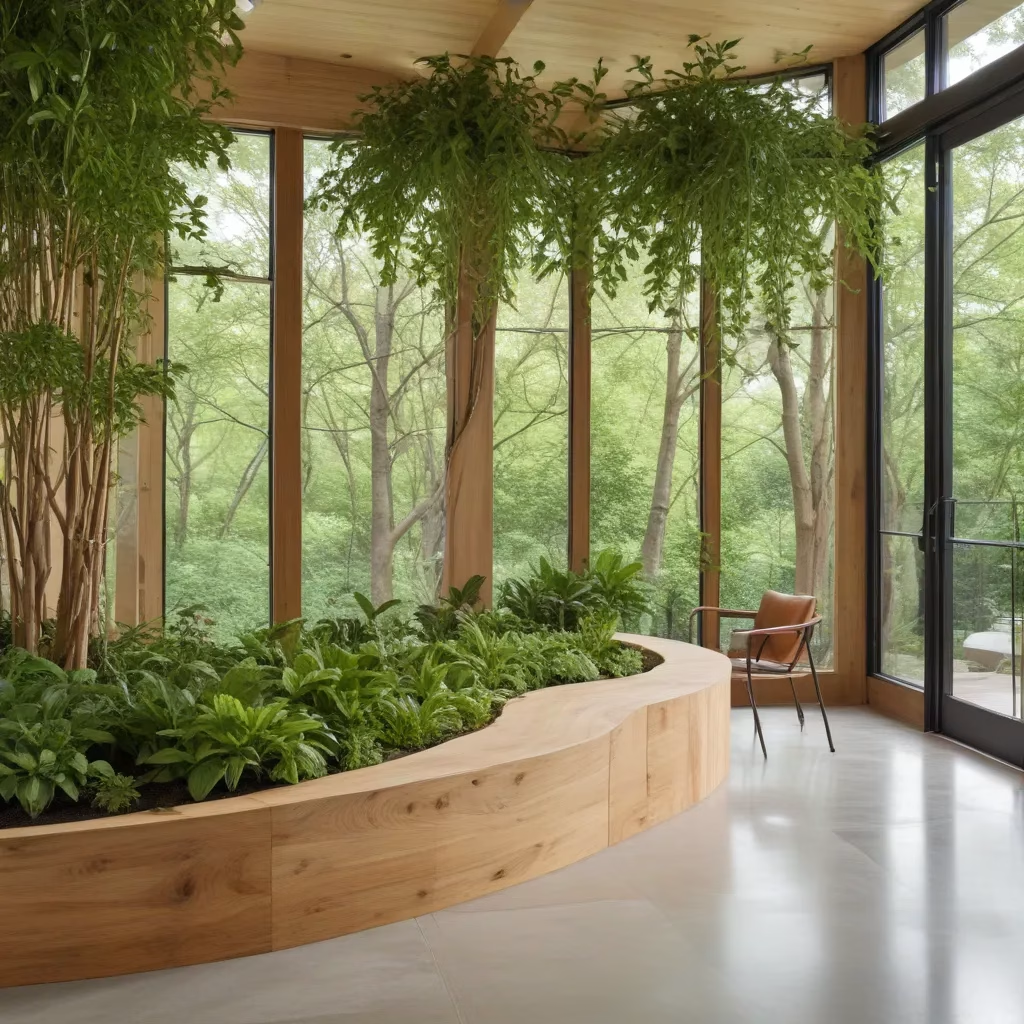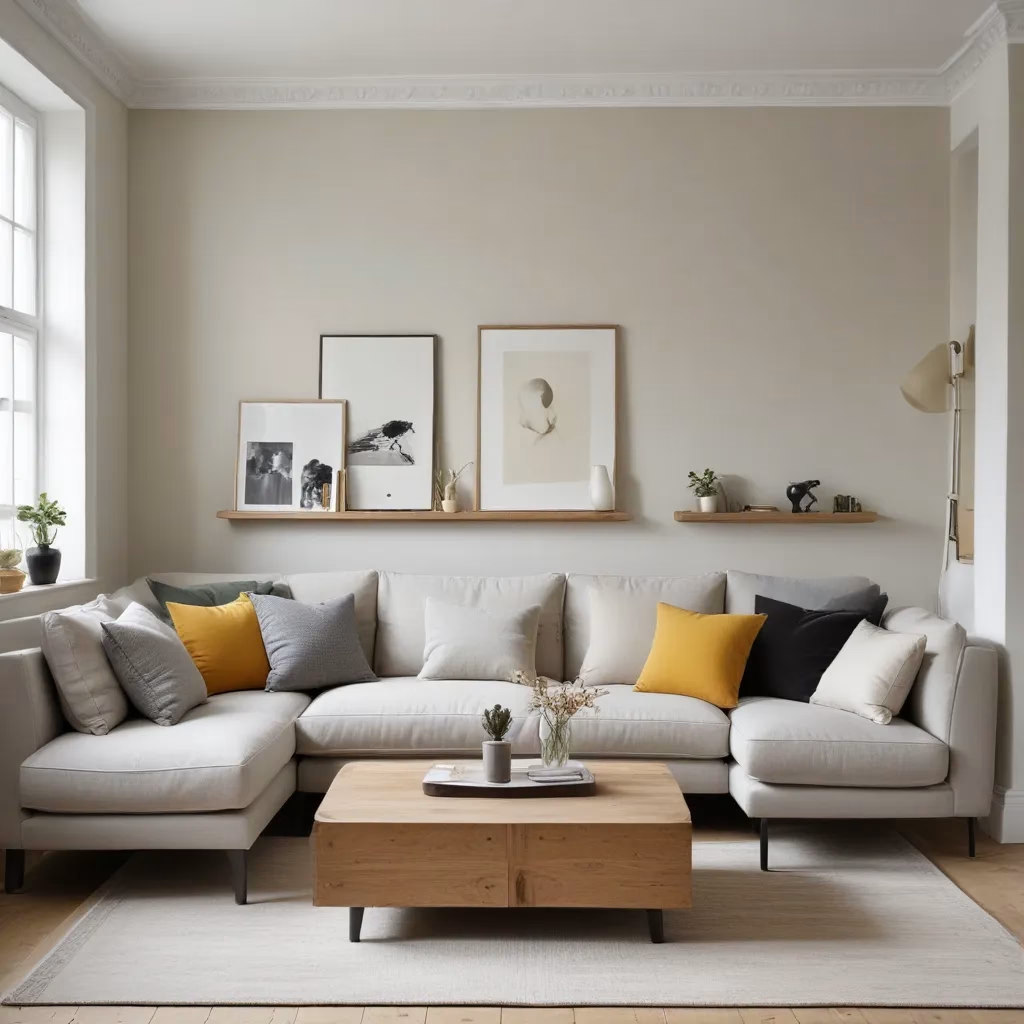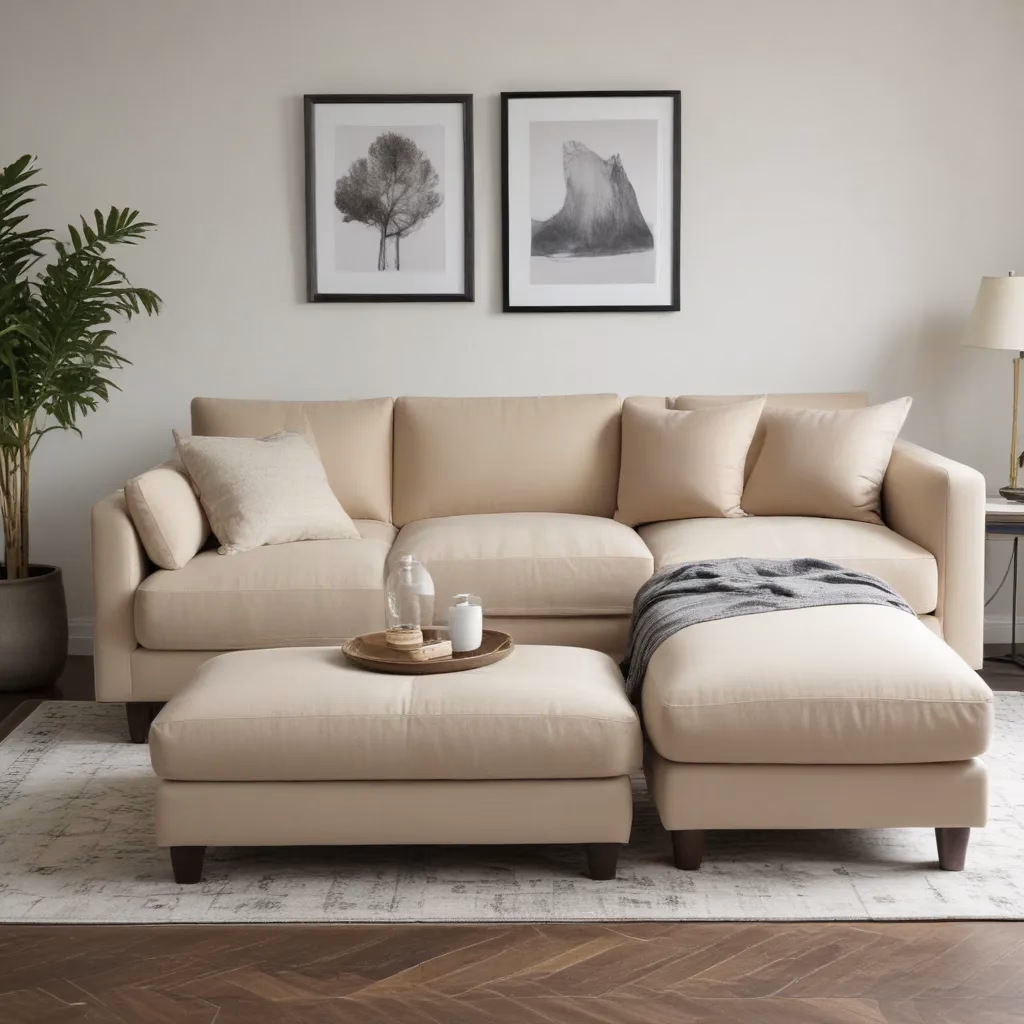
As an experienced furniture consultant and interior design writer, I’ve learned that finding the perfect sofa is a delicate balance of prioritizing comfort and visual appeal. Whether you’re outfitting a cosy living room, a formal sitting area, or an open-concept multi-purpose space, the right sofa can truly anchor and elevate the entire design.
Now, this might seem counterintuitive…
At SofaSpectacular.co.uk, we specialise in high-quality sofas, upholstery, and living room décor solutions. Through years of working with homeowners and design enthusiasts, I’ve developed a comprehensive understanding of the key factors to consider when shopping for a new sofa. From evaluating materials and construction to maximizing layout and styling potential, let’s dive into my expert tips for balancing comfort and aesthetics.
Sofa Buying Considerations
Comfort and Support
The foundation of any great sofa lies in its ability to provide exceptional comfort and support. After all, this is likely where you’ll spend countless hours relaxing, reading, watching movies, or entertaining guests.
When evaluating comfort, look for sofas with ample seat depth (typically 20-27 inches) and generous back height to accommodate a range of lounging positions. Opt for high-quality cushion fillings, such as high-resiliency foam or down-blend, that will maintain their plushness and contouring over time. Many brands now also offer customisable firmness levels or removable/replaceable cushions to fine-tune the perfect level of sink and support.
Proper spinal alignment and lumbar support are crucial for long-term comfort. Sofas with built-in adjustable headrests or subtle lumbar pillows can make a big difference in promoting healthy posture, especially for taller users. And don’t forget to consider the seat height – an ergonomic 16-22 inches off the ground will make getting in and out a breeze.
Fabric and Upholstery Selection
Beyond just aesthetics, the fabric you choose will greatly impact the durability, maintenance, and overall user experience of your sofa. Performance fabrics like stain-resistant polyester, durable microfiber, or easy-clean leather are excellent options for high-traffic areas or households with pets and children.
For a more luxurious look and feel, natural fibres like cotton, linen, or velvet add a sophisticated touch, though they may require a bit more TLC. Carefully consider the rub count (a measure of abrasion resistance) and cleanability of any fabric before making your selection.
If you’re unsure, request physical samples to get a true sense of the texture, colour, and overall quality. And don’t forget to factor in your lifestyle – a light-coloured velvet beauty may not be the most practical choice for a household with messy toddlers!
Size and Proportions
Accurately measuring your living space and envisioning furniture layout is crucial for finding a sofa that fits both physically and aesthetically. Start by taking precise room dimensions, including entryway widths, clearances, and ceiling heights. This will help you determine the maximum sofa size that will work in your home.
Pay close attention to the overall depth, width, and height of potential models. A too-large sofa can overwhelm a small room, while an undersized one may look lost or uninviting. Also, consider the scale and proportions in relation to your other furnishings – you want a cohesive, well-balanced look.
For open-concept spaces or flexible living areas, modular sectional sofas offer endless configuration possibilities to maximise seating and adapt to evolving needs. Just be sure to thoroughly map out your ideal layout before purchasing.
Upholstery Care and Maintenance
Cleaning and Stain Removal
Regardless of the fabric you choose, regular cleaning and prompt stain treatment are essential for keeping your sofa looking its best. Vacuum the upholstery weekly to remove dust, pet hair, and other debris, and spot-clean spills as soon as they occur.
For more thorough cleanings, refer to the manufacturer’s care instructions. Many removable cushion covers can be machine-washed, while fixed upholstery may require professional dry-cleaning. Always test cleaning solutions in an inconspicuous area first to double-check that they don’t damage or discolour the fabric.
Pro tip: Keep a small stain-removal kit handy, with items like club soda, mild dish soap, and a soft-bristle brush. These simple DIY solutions can work wonders on fresh stains before they set.
Fabric Protection Treatments
To extend the life and appearance of your sofa, consider applying a fabric protection treatment. These invisible, water-based coatings create an ultra-thin barrier that repels liquids, oils, and dirt, making spills and stains much easier to clean. Reapply as needed, following the product instructions carefully.
For heavily used sofas or light-coloured fabrics, scotchgarding or applying a similar protective spray can be a game-changer. Just be sure to test in an inconspicuous area first to double-check that compatibility with the upholstery.
Repairs and Refurbishing
Over time, even the highest-quality sofas may experience minor wear and tear, such as sagging cushions, loose joints, or faded fabric. Rather than immediately replacing the entire piece, explore repair and refurbishing options.
Many furniture brands and upholstery specialists offer replacement parts like new cushions, covers, or hardware that can breathe new life into your cherished sofa. And for more extensive damage, professional reupholstering services can transform an old favourite into a like-new statement piece.
By investing in proper care and maintenance, you can extend the lifespan of your sofa and double-check that it continues to be a comfortable and visually appealing focal point in your living space.
Living Room Layout and Design
Room Measurements and Space Planning
Once you’ve identified your ideal sofa in terms of comfort and construction, it’s time to consider how it will integrate into your overall living room design. Start by carefully measuring your available floor space, factoring in clearances for pathways, access to windows and doors, and the placement of other key furnishings.
Using these measurements, create a scaled floor plan or sketch to visualise potential furniture arrangements. This will help you determine the maximum sofa size that will work without overcrowding the room or creating awkward flow.
Pro tip: When planning your layout, leave at least 18-24 inches of clearance around the sofa to double-check that easy movement and conversations. Adjust this buffer as needed based on the room’s traffic patterns.
Furniture Arrangement Strategies
With your room dimensions in hand, you can begin experimenting with different furniture placement strategies to achieve an inviting and functional living space. A classic symmetrical layout with a sofa centred against a wall, flanked by accent chairs or side tables, creates a formal, balanced look.
Alternatively, an asymmetrical arrangement can add visual interest and a more casual, lived-in feel. Try positioning your sofa at an angle or floating it in the middle of the room, then building out the design with complementary pieces.
For open-concept areas or larger rooms, zoning with strategically placed area rugs, lighting, and groupings of seating can help define distinct conversation and relaxation zones. Just be mindful of traffic flow and sightlines throughout the space.
Complementary Decor Elements
Once your sofa is in place, it’s time to layer in complementary décor that enhances the overall aesthetic. Accent pillows, throws, and artwork can all be used to pull colours and textures from the sofa’s upholstery, tying the entire room together.
Carefully selected side tables, coffee tables, and ottomans can also provide essential storage and surface space, while also complementing the sofa’s scale and style. And don’t forget the power of lighting – floor lamps, sconces, and strategically placed ambient lighting can dramatically alter the mood and functionality of your living area.
Tip: When mixing and matching décor, look for pieces that share at least one common element, whether it’s a colour, material, or design motif. This will help create a cohesive, harmonious look.
Styling for Aesthetic Appeal
Colour and Pattern Coordination
In addition to comfort and durability, the visual appeal of your sofa is a crucial consideration. Start by assessing the colour palette and patterns you’d like to incorporate into your living room design.
Neutral-toned sofas in shades of grey, beige, or charcoal offer a versatile foundation that can be easily accented with colourful pillows, throws, and artwork. Alternatively, a jewel-toned or patterned sofa can serve as the room’s vibrant centrepiece, with surrounding décor pulling from its hues and motifs.
When selecting fabrics, also consider the undertones – a warm-leaning grey will pair differently than a cool-toned version. And don’t be afraid to mix and match complementary patterns, textures, and scales for visual interest.
Texture and Material Combinations
In addition to colour, the material and texture of your sofa can have a significant impact on the overall aesthetic. A sleek, leather or velvet sofa can lend an air of sophistication, while a linen or microfiber option feels more casual and relaxed.
Pair your sofa with accent pieces that echo its tactile qualities, such as wooden side tables, metallic lamps, or plush area rugs. This layering of different materials and finishes creates visual depth and a more curated, designer-worthy look.
Pro tip: When working with natural fibres like cotton or linen, consider the weave and weight – a heavier, more structured fabric will read very differently than a soft, flowing slipcover.
Lighting and Accessorizing
Proper lighting can make or break the ambiance and functionality of your living room. Position floor lamps, sconces, or recessed fixtures to cast a warm, flattering glow on your sofa and surrounding décor. Dimmers allow you to further control the mood, from cosy and intimate to energizing and bright.
Finally, don’t overlook the power of accessories in elevating your sofa’s aesthetic appeal. Decorative throw pillows, soft blankets, and eye-catching artwork can transform a basic sofa into a true statement piece. Experiment with scale, texture, and placement to create a visually striking focal point.
Remember, the perfect sofa is one that not only provides comfort and functionality but also seamlessly integrates into your overall living room design. By carefully considering the factors outlined here, you can strike the ideal balance between form and function, ensuring your new sofa will be a beloved part of your home for years to come.
For more expert tips and inspiration, be sure to visit https://sofaspectacular.co.uk/ – your one-stop destination for high-quality furniture and living room décor solutions.
Tip: Rotate cushions regularly to maintain even wear



